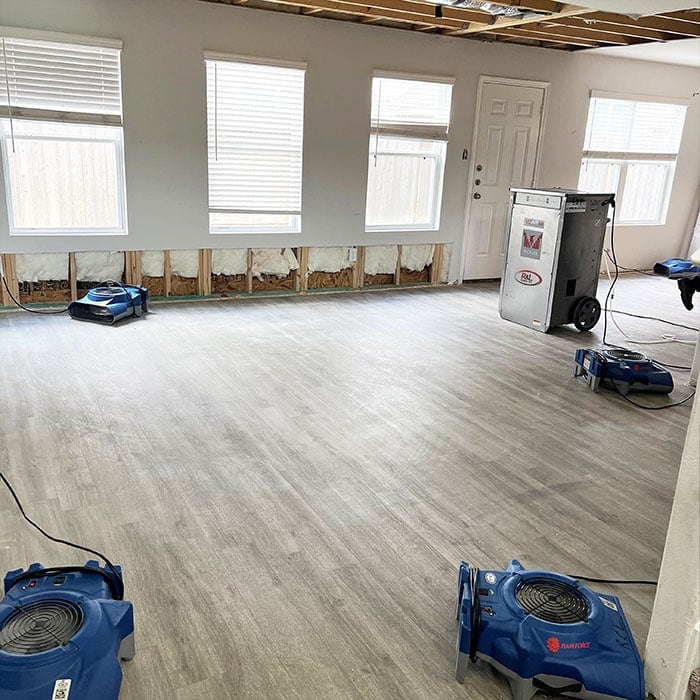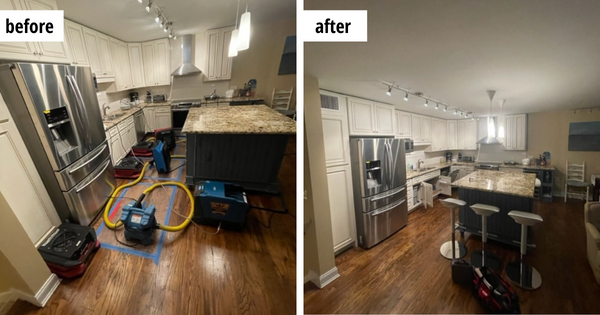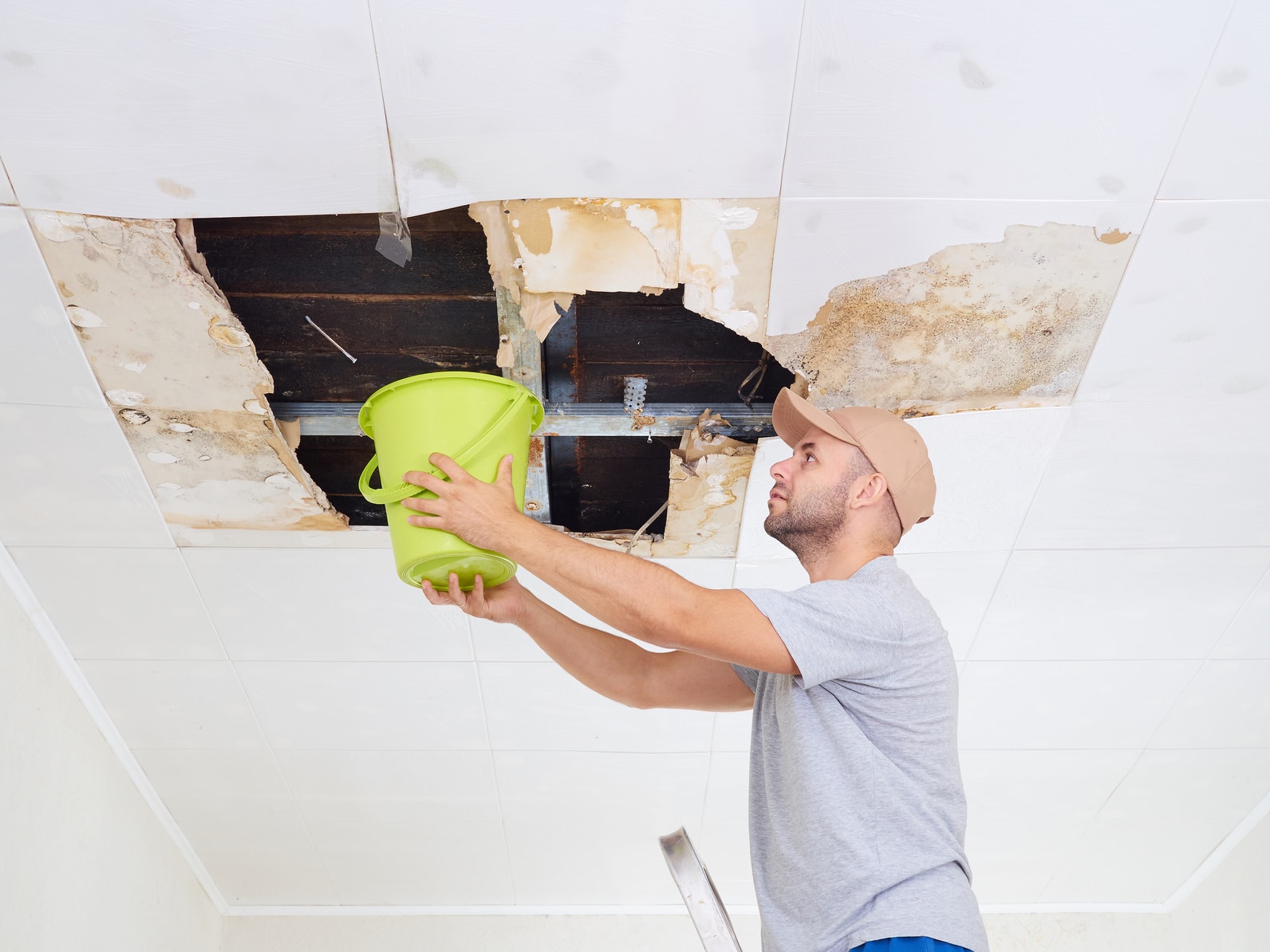Leak Detection Philadelphia: Early Intervention for Home Defense
Leak Detection Philadelphia: Early Intervention for Home Defense
Blog Article
Emergency Water Damage Repair: Swift Response to Minimize Additional Damage
Water damage can strike all of a sudden and leave devastating results on homes and services. When confronted with such a circumstance, a quick response is essential to reduce more damages and protect against possible health and wellness threats. But what exactly does emergency water damages reconstruction require? In this conversation, we will certainly look into the importance of instant action, the assessment process, the steps entailed in water extraction and drying, mold prevention and remediation, and eventually, the remediation of the afflicted location. By recognizing the urgency and detailed nature of this procedure, you will certainly get important understandings right into exactly how professionals take on emergency situation water damage, ensuring a swift and efficient action.
Relevance of Swift Response
Swift action is of utmost importance in water damages restoration to reduce further damages and minimize prospective threats. The longer water rests in a structure, the even more damage it can cause.
Among the main reasons speedy action is vital in water damage reconstruction is to avoid the development of mold and mildew and mildew. Mold and mildew can begin to grow within 24 to 2 days of water exposure, and when it holds, it can spread swiftly throughout the damaged location. Mold and mildew not just causes further damage to the framework of the building yet additionally postures health and wellness threats to residents. By reacting swiftly, experts can thoroughly dry the area and prevent the growth of mold and mildew, decreasing the need for extensive remediation and ensuring the safety of those entailed.
Additionally, a prompt feedback can assist salvage and bring back valuable valuables and possessions - mold remediation philadelphia. Water damage can be ravaging, particularly when it impacts individual things of financial or sentimental value. Acting swiftly permits specialists to assess the damages and apply appropriate remediation methods to restore as long as possible. This not only assists to reduce monetary losses however also brings peace of mind to those affected.
Examining the Degree of Damage

During the assessment, restoration experts thoroughly examine the damaged location to determine noticeable indicators of damages, such as water discolorations, distorted materials, and mold growth. They additionally use specialized tools to discover covert damage, such as moisture meters and thermal imaging video cameras. This comprehensive examination allows them to properly figure out the degree of the damages and establish a customized remediation strategy.
Assessing the extent of water damages is important since it aids professionals prioritize their initiatives. They can determine locations that need prompt focus, such as standing water removal and drying, to stop further damage and minimize the risk of mold growth. They can also identify the areas that need repair services or substitute, making sure that no damages goes unnoticed or without treatment.

Water Removal and Drying Out Refine
The water removal and drying process is an important action in water damages restoration, as it includes the removal of excess water and the detailed drying out of the affected location to avoid further damage and reduce the risk of mold growth. After analyzing the level of the water damages, the following step is to draw out the water from the afflicted area. This is generally done making use of customized tools such as pumps, dehumidifiers, and vacuums. These devices are made to successfully and efficiently remove water from various surface areas, consisting of carpets, wall surfaces, and floors.
When the excess water has been drawn out, the drying out procedure starts. This action is vital in avoiding secondary damages, such as structural damage and the growth of mold and mildew and mold. High-powered followers and dehumidifiers are used to circulate air and remove wetness from the air and surfaces. The drying procedure may take several days, relying on the level of the water damage company website and the products involved.
It is essential to ensure that the afflicted location is totally dry prior to proceeding with any kind of repair work or restoration. Failing to completely dry the area can bring about lasting issues, including damaged structures, mildewy odors, and the growth of mold and mildew and mildew. Specialist water damages remediation firms use dampness detection tools to make certain that the afflicted location is completely dry before continuing to the following action.
Mold Prevention and Removal
Reliable mold and mildew avoidance and removal are critical in water damages reconstruction to make sure the safety and honesty of the damaged location. mold remediation philadelphia. When water damage happens, whether from a ruptured pipeline, flooding, or a leaky roofing, it creates an excellent atmosphere for mold and mildew growth. Mold can start to create within 24 to two days after water damage, and if left neglected, it can spread out quickly and cause serious health threats
To stop mold growth, it is necessary to attend to water damage without delay. The very first step is to repair the resource and recognize of the water intrusion. When the resource is dealt with, the damaged area must be extensively dried to protect against wetness from remaining. This might involve using dehumidifiers, air movers, and various other customized tools to remove excess dampness from the air and surface areas.
In situations where mold development has already occurred, remediation view it now is essential to get rid of the mold and mildew and avoid its return. This involves the mindful removal and disposal of damaged products, such as drywall or rug, to guarantee that all traces of mold and mildew are removed. It is essential to note that mold removal should be executed by professionals who have the necessary training and tools to safely take care of and eliminate mold and mildew.
Recovering the Affected Area

Firstly, it is vital to completely dry the area to avoid any additional damage and to inhibit the development of mold and mildew. This may involve making use of specialized drying equipment, such as dehumidifiers and industrial-grade fans, to remove all wetness from the affected surface areas.
Once the area is totally dry, the remediation process can start. This might involve repairing or replacing damaged structural aspects, such as flooring, ceiling, or drywall tiles. It is crucial to address any kind of underlying problems that may have created the water damages, such as dripping pipes or malfunctioning pipes, to avoid future events.
Furthermore, recovering the damaged area might also include painting wall surfaces, replacing harmed fixtures, and extensively cleansing and sterilizing the room. This makes sure that not just is the area structurally audio, however it is additionally visually pleasing and risk-free for occupancy.
Verdict
Evaluating the level of damage permits for reliable water removal and drying procedures to be applied. Generally, prompt activity and thorough reconstruction actions are vital to minimizing the unfavorable impacts of water damages.
Swift action is of utmost importance in water damages reconstruction to minimize more damages and mitigate possible dangers.Throughout the assessment, reconstruction professionals extensively check out the affected location to identify noticeable signs of damages, such as water discolorations, deformed products, and mold development.The water extraction and drying procedure is a vital step in water damages repair, as it includes the removal of excess water and the comprehensive drying of the afflicted area to prevent more damages and alleviate the threat of mold development. After evaluating the degree of the water damages, the next Continued action is to draw out the water from the damaged location.Efficient mold prevention and removal are essential in water damages remediation to guarantee the safety and security and integrity of the affected location.
Report this page